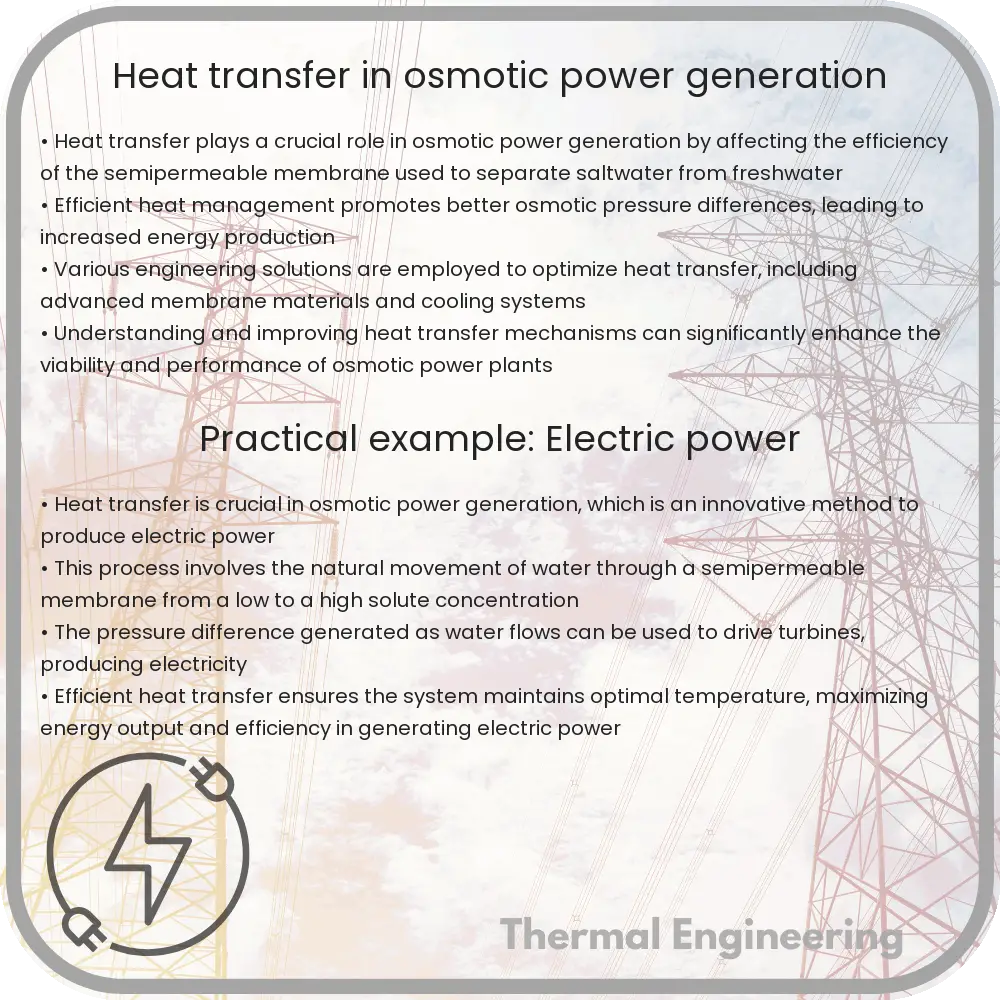Explore the impact of heat transfer on the efficiency and stability of osmotic power generation systems, focusing on conduction, convection, and radiation effects.

Understanding Heat Transfer in Osmotic Power Generation
Osmotic power generation, also known as salinity gradient power, exploits the energy available from the difference in the salt concentration between seawater and river water. A key component of understanding and optimizing osmotic power systems is the analysis of heat transfer processes involved. This article will explore how heat transfer affects osmotic power generation systems and the principles behind managing these thermal effects.
Basics of Osmotic Power Generation
Osmotic power generation utilizes a semi-permeable membrane that separates two fluids with different salinity levels—typically seawater and freshwater. The natural process of osmosis causes water to move from the less concentrated solution to the more concentrated saline solution, creating pressure on the seawater side. This pressure can be harnessed to drive turbines and generate electrical power.
Role of Heat Transfer
Heat transfer in osmotic power plants can affect both the efficiency and stability of power generation. There are three types of heat transfer mechanisms to consider:
- Conduction: Thermal energy is transferred through materials by molecular interaction. In osmotic power systems, heat conduction occurs through the membrane and the boundary layers of fluids in contact with the membrane.
- Convection: Heat is carried along by the movement of the fluid. This occurs when warm water mixes with cooler water, potentially affecting the osmotic pressure differential across the membrane.
- Radiation: Thermal energy emitted in the form of electromagnetic waves. Although less significant in osmotic power systems, it can contribute to the overall heat balance.
Thermal Effects on Membrane Performance
The performance of the semi-permanent membrane is crucial to the effectiveness of osmotic power generation. Temperature changes can influence membrane permeability and selectivity, impacting the efficiency of power generation. Higher temperatures typically increase the permeability of the membrane, which can enhance water flux but might also lead to increased passage of salt ions, reducing the osmotic pressure difference.
Managing Heat Transfer
Effective management of heat transfer is essential for optimizing osmotic power generation. Engineers use several strategies to control the thermal environment within osmotic power plants:
- Thermal Insulation: Reducing unwanted heat exchange with the environment through the use of insulating materials around pipes and membranes.
- Temperature Regulation: Maintaining an optimal range of operating temperatures to maximize membrane performance and minimize thermal degradation.
- Heat Exchangers: Employing heat exchangers can counteract the undesirable temperature changes caused by the mixing of fluids with different temperatures.
Conclusion
Heat transfer plays a significant role in the efficiency and operational capacity of osmotic power generation systems. By understanding and controlling thermal interactions, engineers can enhance the performance and durability of these innovative renewable energy systems. With ongoing research and development, the management of heat transfer in osmotic power is poised to become even more sophisticated, promising a cleaner and more sustainable energy future.